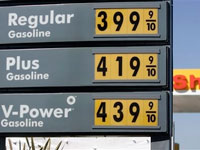 Conversation Starter:
Conversation Starter:Making A Run At Strategic Innovation
What do you do when the very breakthrough strategy that once made your business uniquely powerful (Staples, Home Depot, Starbucks) now threatens to turn you into a commodity rivals find easy to copy? Whenever I get an assignment from a client shifting from strategy ‘maintenance’ to ‘creativity’ mode I employ Multi-Dimensional Creativity to lift an industry or brand past previous benchmarks.
Creativity Is Not Just An Ad You Watch, See & Hear
MULTI-DIMENSIONAL-CREATIVITY® - To redefine an industry’s original breakthrough strategy, define new underpinnings and to get tongues wagging again (or to invigorate a brand, create a new product or envision a new category) we first sit down and list out over 500 product dimensions concerning that product, brand or industry that in every way shape and form impact and influence consumer perception and purchase behavior. Under each dimension; sensory, form, function, usage, image, attitude, price, packaging, delivery system, segmentations, transitions, escape, reward, heritage, trust, tradition, affluence and hundreds of other dimensions only we know of, Partners bullet point another 500 short phrases per dimension that in every way shape and form may potentially positively impact and influence consumer perception and purchase behavior in that industry, category or segment. When done we will have amassed about 250,000 phrases - many times the number of ideas an advertising agency or company brings to the table in their brand's lifetime. From this list we hand-select 500 to 1,000 phrases that we put in front of consumers so that consumers can select the phrases that best motivate them to try a product once [again] and if they try it and like it to buy it again. We employ this Consumer-Creativity® via our comprehensive Creative Stimulus Packages as the foundation for the highly-differentiating and salable new breakthrough business strategy concepts that result.
Has your brand become a heavily price driven commodity? Do you manage business strategies that compete in heavily price driven categories? Dot coms Expedia, Travelocity, Priceline, Orbitz and Hotwire are great examples of heavily price driven commodity brands. And as Procter & Gamble discovered with EDLP, once your consumer sets their sights on price your equity sinks so low you have to climb up a ladder to get to the bottom – enabling retailers (Costco) to finally get a leg up on P&G and call the shots on core brands like Tide.
In this environment, Callé & Company has demonstrated a consistent track record of reversing the effects of mature business strategy lifecycles – of turning mature earnings companies back into rapid growth businesses. We ask consumers no questions so they can tell us no lies. We prefer our proactive Creative Stimulus Packages to reactive market research to create new knowledge - once again leapfrogging existing frames of reference, and competitors, with strategies rivals will find difficult to copy. P&G’s Paper Division employed our process, shifting Pamper’s strategic focus from ‘fit’ and ‘dryness’ to ‘development’. Repositioned as Pampers Phases Developmental Diapers the brand arrested category migration to rival Kimberly-Clark’s Pull-Ups, providing a much broader base from which to develop the paper business and net an incremental $1 billion in disposables sales each year. K-C never caught up.
Callé & Company does not cut and paste strategies from one industry or company to another. I have no canned answers as do the experienced advertising agencies on Madison Avenue. If you would like to determine optimum future business strategies, let’s meet.




















